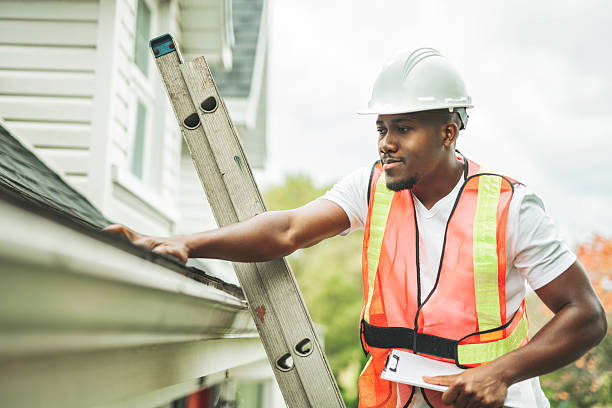Demystifying Residential Roof Inspection Reports
When you receive a residential roof inspection report, it’s not just a checklist—it’s a roadmap to your home’s safety and longevity. Understanding what the inspector means and how to interpret the findings can make the difference between proactive maintenance and costly surprises down the road. In this guest post, we’ll walk you through the main sections of the report, decode common terminology, and provide you with actionable next-steps.
What is a Residential Roof Inspection Report?
A residential roof inspection report is a comprehensive document prepared by a qualified inspector after evaluating your roof, attic space, structure, and drainage systems. It aims to give you a clear overview of the roof’s current condition, highlight areas of concern, and suggest recommended actions. If you’re buying or selling a home, managing repairs after severe weather, or simply performing a maintenance check, this report becomes an essential tool.
Typical Components of the Report
Most inspection reports will include a to-do list of items grouped by category. Here are the common sections:
-
Roofing Materials: Identifies what kind of materials (shingles, metal, etc.) are in use, how much wear they exhibit, and estimated remaining lifespan.
-
Roof Features: Checks chimneys, skylights, vents, piping boots, and flashing to see if they’re sound or causing problems.
-
Structural Integrity: Looks at trusses, rafters, sheathing, and signs of sagging or rot to determine if the structural base is stable.
-
Drainage Systems: Evaluates gutters, downspouts, and overall water flow to ensure water is directed safely away from the home.
-
Interior/Attic Inspection: Reviews insulation, ventilation, water stains, or daylight intrusion from the attic side—these reveal hidden roof issues.
-
Overall Condition Summary: A concluding section where the inspector rates the roof’s health (often as “good,” “fair,” or “poor”) and provides a snapshot of remaining useful life.
How to Interpret the Findings
Reading the report is only half the job. The trick is knowing how to interpret the findings so you can act wisely.
-
Terminology matters: Terms like “flashing failure,” “fascia decay,” or “granule loss” may seem opaque—but they pinpoint what’s going wrong.
-
Grading tells urgency: If the report grades a component as “poor” or uses urgent language (“immediate repair required”), treat that as a red flag—you want to address it fast.
-
Context is key: A missing shingle or minor seal separation might be fine for now, but if you see repeated wear across multiple zones, that signals a trend.
-
Differentiating cosmetic vs. structural: Some items are aesthetic (e.g., faded shingles) while others are structural (e.g., sagging sheathing). The report should help you distinguish both.
-
Quotes and recommendations: The insights may include recommended repair timelines or cost estimates—use these to budget maintenance proactively.
Common Issues Flagged in Reports
Here are some frequent culprits that tend to show up:
-
Missing, cracked or curling shingles – exposure to elements increases risk of leaks.
-
Flashing around chimneys, vents or skylights failing – these are common leak entry points.
-
Poor attic ventilation or signs of moisture – can shorten roofing component life and lead to mold.
-
Clogged, misaligned gutters or downspouts – water backup may cause roof edge damage or structural issues.
-
Signs of aging materials – granule loss, worn underlayment, or rusted metal components may indicate near-end-of-life.
Recognizing these in your report helps you gauge urgency and plan for maintenance.
Next Steps After Receiving the Report
Once you review your residential roof inspection report, here’s a simple action plan:
-
Prioritize immediate repairs – if the report indicates structural or leak-related issues, address these first with a licensed contractor.
-
Get quotes – for significant repairs or replacements, get at least two or three qualified roofing professionals to bid the work.
-
Schedule maintenance tasks – for less urgent items (e.g., cleaning gutters, trimming overhanging branches), set these on your calendar.
-
Monitor key metrics – keep track of attic moisture, shingle condition, and drainage performance—this lets you catch new issues early.
-
Plan for replacement – if the remaining lifespan of major components is nearing end-of-life, begin budgeting and planning for roof replacement before emergencies strike.
Why Regular Inspections Matter
Roofing systems are your home’s first line of defense against weather, so regular inspections are critical. A well-timed inspection can catch minor issues before they balloon into major failures. Establishing a relationship with a trusted roofing specialist means your roof’s history is documented, its risks are known, and you’re empowered to keep your home safe.
Conclusion
Being equipped to interpret your residential roof inspection report empowers you to make confident decisions, keep your home protected, and avoid costly emergency repairs. At [Your Company Name], we believe in transparent reporting, clear communication, and proactive care for your roof. With our support, you’ll understand what’s behind every line in the inspection report and what you can do next.
visit: overlypost













